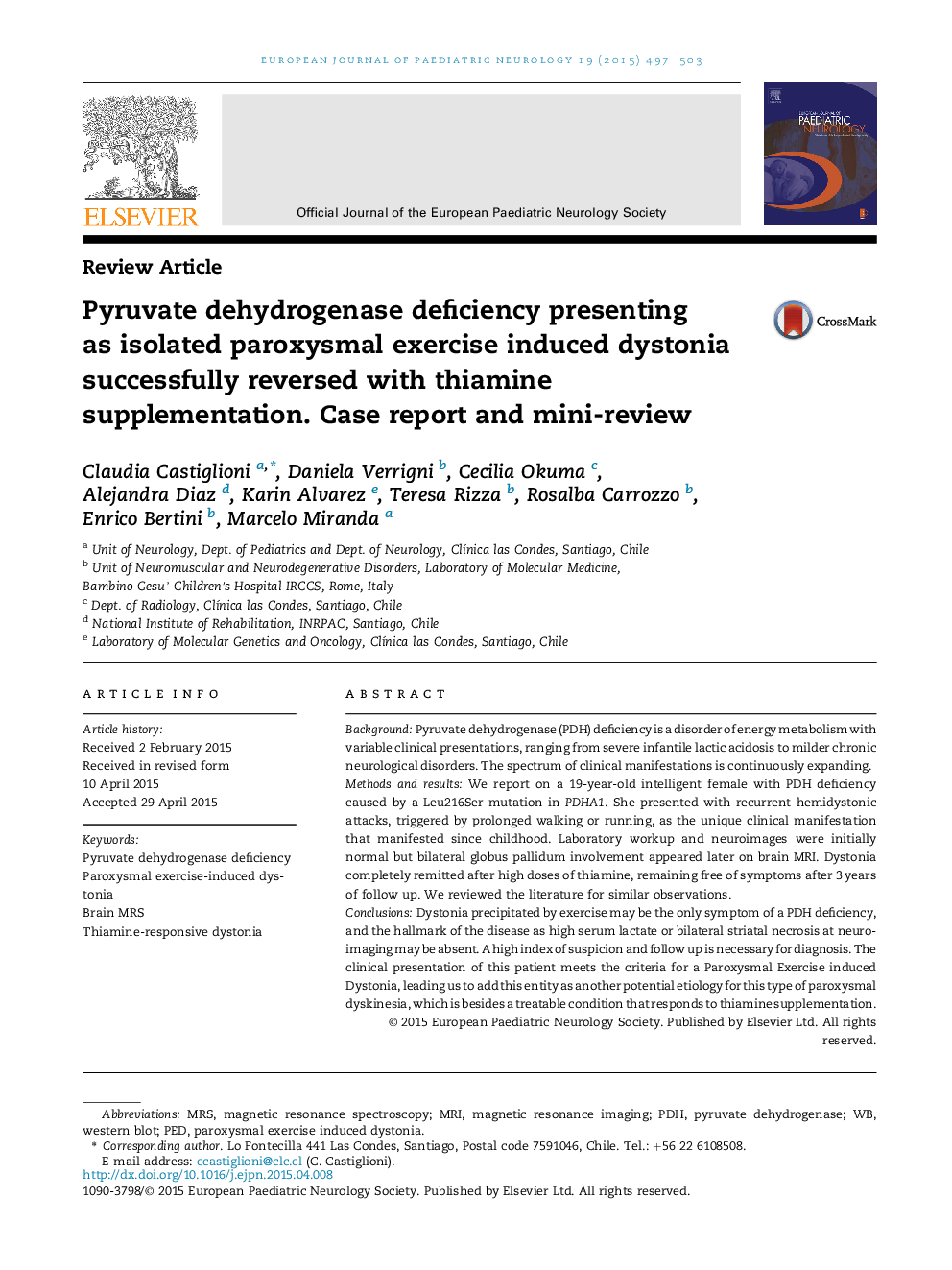| کد مقاله | کد نشریه | سال انتشار | مقاله انگلیسی | نسخه تمام متن |
|---|---|---|---|---|
| 3053629 | 1580011 | 2015 | 7 صفحه PDF | دانلود رایگان |
• Paroxysmal exercise dystonia (PED) may be an isolated symptom in a patient with PDH deficiency.
• The classical hallmark of the disease: high serum lactate or neuroimaging abnormalities may be absent.
• In some patients an excellent clinical response to high dose of thiamine supplementation can change the course of the disease.
• MRS could be used to monitor reversible signs of cerebral metabolic lactic acidosis after thiamine supplementation.
BackgroundPyruvate dehydrogenase (PDH) deficiency is a disorder of energy metabolism with variable clinical presentations, ranging from severe infantile lactic acidosis to milder chronic neurological disorders. The spectrum of clinical manifestations is continuously expanding.Methods and resultsWe report on a 19-year-old intelligent female with PDH deficiency caused by a Leu216Ser mutation in PDHA1. She presented with recurrent hemidystonic attacks, triggered by prolonged walking or running, as the unique clinical manifestation that manifested since childhood. Laboratory workup and neuroimages were initially normal but bilateral globus pallidum involvement appeared later on brain MRI. Dystonia completely remitted after high doses of thiamine, remaining free of symptoms after 3 years of follow up. We reviewed the literature for similar observations.ConclusionsDystonia precipitated by exercise may be the only symptom of a PDH deficiency, and the hallmark of the disease as high serum lactate or bilateral striatal necrosis at neuroimaging may be absent. A high index of suspicion and follow up is necessary for diagnosis. The clinical presentation of this patient meets the criteria for a Paroxysmal Exercise induced Dystonia, leading us to add this entity as another potential etiology for this type of paroxysmal dyskinesia, which is besides a treatable condition that responds to thiamine supplementation.
Journal: European Journal of Paediatric Neurology - Volume 19, Issue 5, September 2015, Pages 497–503
